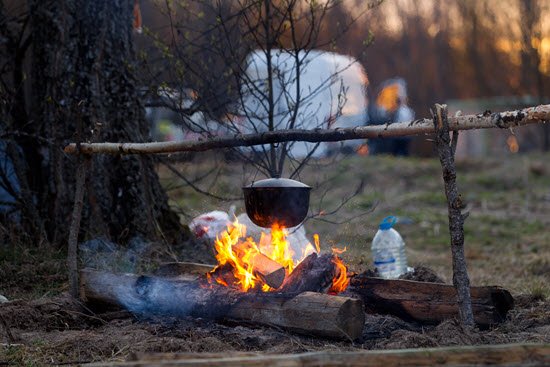Three Hacks for Safe Cookouts for Backyard, Tailgate or Campsite!
So you’re camping out and getting your cooking gear together! Or, maybe you’re just going to fire up the grill in the backyard and cook for family and friends. Maybe you’re gathering your tailgate supplies for the College and Pro football season. Whichever version of outdoor cooking you’re leaning towards it’s always a great idea to keep a few food safety tips in mind. Hopefully, there won’t be any problems! But here are three safety hacks that are perfect for the back yard, tailgate or the campsite. Safe Cookouts ONE – Cold and Hot - Safe Temperatures – Digital Thermometers The general rule of thumb that I mention during my chef demos is this; Keep the cold food cold and keep the hot food hot. Use ice to keep cold foods chilled while serving. Such as a bowl of pasta salad resting in a tray of ice. Never mix ice used for consumption with ice used to store food – especially any meat that could drip raw fluids. Also, cook/grill meats to their proper internal temperature. The only way to do this is with a thermometer. Personally, I use Digital Thermometers for a variety of things. I have a Digital Instant Read Thermometer that’s pocket-sized and perfect for camping and tailgating. Safe Cookouts And I have a Bluetooth Thermometer which sends the chamber temperature of my barbecue smoker to my cell phone. Plus I have a couple of older plain cooking thermometers for backups in case a battery dies. Use your thermometer to check the internal temps so you properly cook items to the USDA recommendation. This takes care of harmful bacteria that may cause illness. Temps differ from meat to meat so I’ve added the USDA Temperature Chart below. Beef, Pork, Veal & Lamb Steaks, chops, roasts 145 °F (62.8 °C) and allow to rest for at least 3 minutes Ground meats 160 °F (71.1 °C) Ham, fresh or smoked (uncooked) 145 °F (62.8 °C) and allow to rest for at least 3 minutes Fully Cooked Ham (to reheat) Reheat cooked hams packaged in USDA-inspected plants to 140 °F (60 °C) and all others to 165 °F (73.9 °C). All Poultry (breasts, whole bird, legs, thighs, and wings, ground poultry, and stuffing) 165 °F (73.9 °C) Fish & Shellfish 145 °F (62.8 °C) Source USDA.gov If the food you are serving was stored in the fridge then that food needs to be kept chilled during serving. Hot food from the grill, oven, grill or stove should [...]


